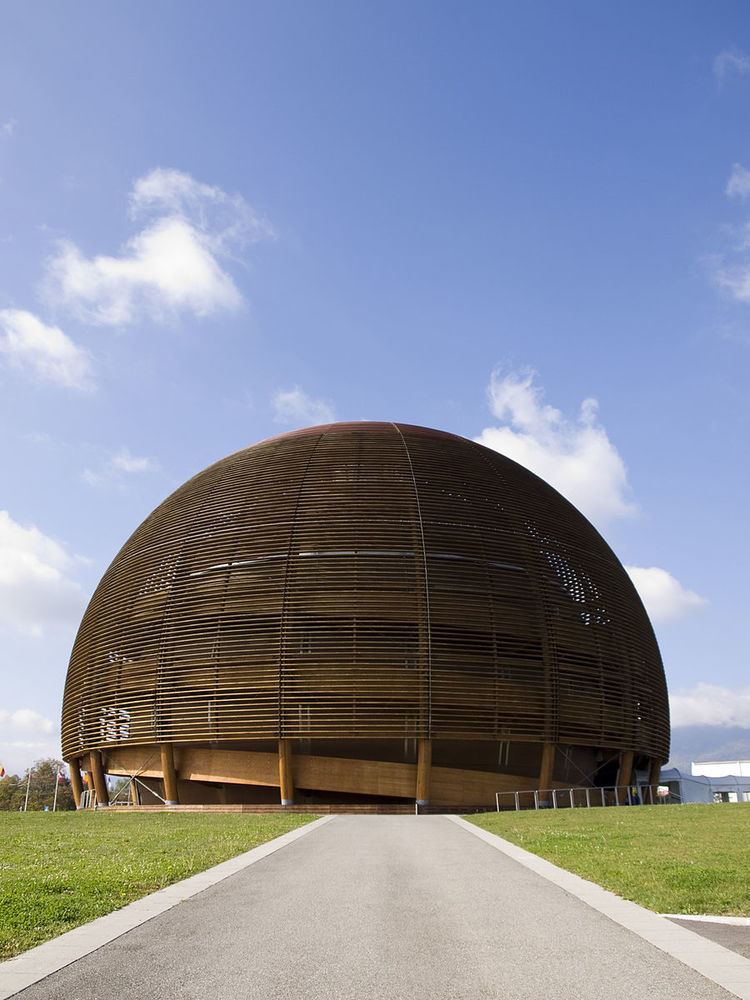Established 2005 (2005) | Phone +41 22 767 42 00 | |
 | ||
Website Globe of Science and Innovation Address Square Galileo Galilei, Route de Meyrin 385, 1217 Meyrin, Switzerland Architect Hervé Dessimoz; Thomas Büchi Similar Microcosm, Palexpo, Palais des Nations, GIS Services Industriel, ATLAS Experiment | ||
The globe of science and innovation cern
The Globe of Science and Innovation is a visitor center, designed to inform visitors about the significant research being carried out at CERN. The wooden structure, which is 27 metres (89 ft) high and 40 metres (130 ft) in diameter, is a symbol of planet earth and was originally built for Expo.02 in Neuchâtel, Switzerland. In 2004, it was moved to its current location in Meyrin in the Canton of Geneva, Switzerland.
Contents
- The globe of science and innovation cern
- The globe of science and innovation
- History of the Globe
- Universe of Particles
- Second floor
- References
The globe of science and innovation
History of the Globe
The globe started life as the Palais de l'Equilibre at Expo.02 in Neuchâtel, Switzerland. It was designed by Geneva architects, Hervé Dessimoz and Thomas Büchi, as a model of sustainable building. It is 27 metres (89 ft) high and 40 metres (130 ft) in diameter, roughly the size of the dome of St. Peter's Basilica in Rome. The globe consists of two concentric spheres nested within one another, made up of five different types of timber: Scotch pine, Douglas pine, spruce, larch, and Canadian maple. The outer shell is composed of wooden slats, and two ramps run between the two spheres, allowing visitors to see out. The inner sphere is made of 18 wooden arches, covered by wooden panels; this forms the walls of the globe's interior. This construction model enables the globe to act as a natural carbon sink.
After Expo.02 was closed, the Swiss Confederation donated the Palais de l'Equilibre to CERN, and it was renamed the Globe of Science and Innovation. It was moved and re-opened in 2004, in time for the 50th anniversary of CERN. In 2010, the globe was renovated and its new, permanent exhibit, Universe of Particles, was opened.
The globe is managed by the Foundation for the Globe of Science and Innovation.
Universe of Particles
The first floor of the renovated globe is dedicated to the globe's only permanent exhibition, Universe of Particles, which was designed by the architectural firm, Atelier Brückner. It is divided into six exhibition areas:
Second floor
The second floor, which is reached by a third walking ramp, is a high-ceilinged multipurpose space that is used for events such as lectures, films, and press conferences. The walls along the ramp describe the Big Bang.
